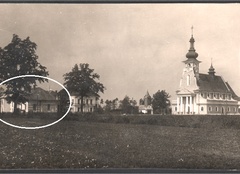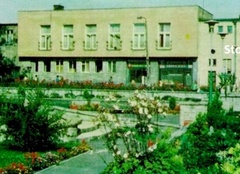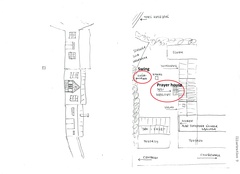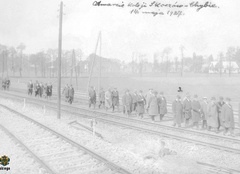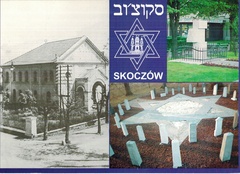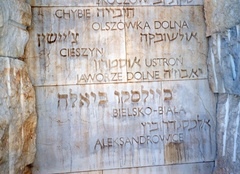Chybie
Pronounced "KHIH-bee-eh" (Czech: Chyby, German: Chybi)
Although Jews had passed through the region as merchants since the Medieval period, the first Jewish family living in Chybie was not recorded until 1730—largely due to the policy of the ruling Hapsburgs that prohibited Jews from residing in the area.
The Tolerance Edict of 1713 allowed Jews to legally settle, but only after they paid a special “tolerance tax.” In 1781, a new law required Jews to use the German language of their Austrian rulers and they were prohibited from practicing their religion in public. It was not until the 1860s that Jews were granted equal rights as citizens.
The Jewish population of the area grew throughout the late 1800s, especially after a sugar mill began operating in Chybie in 1886. The census of 1890 recorded that 70 Jews lived in Chybie, about 6 percent of the village’s 1,156 total inhabitants. The same year a new law required all Jews living within the Austrian Empire to belong to a religious community that would serve as the representative of Jewish citizens. In 1893 a religious community was established in the neighboring town of Skoczów, to which the Jews of Chybie were required to belong and pay taxes to support.
Skoczów had opened a small synagogue in 1853, but within Chybie religion was usually practiced inside the home. Sometimes families—mostly men—visited the prayer house that opened in the village in 1893. A single person served in the triple role of prayer leader, religious teacher and kosher butcher for the Jewish residents of the community. While some Jews followed more traditional customs of Orthodox culture and dress, others adopted more modern styles of clothing.
As with the other residents of the village, Jewish residents fought and died fighting for the Austrian Empire in World War I (1914-1918). However, this did not prevent them from being accused of “food usury,” or artificially inflating the price of food in times of scarcity. During and after the war, Jewish business owners found themselves the victims of burglaries and sometimes were assaulted or had their properties burned down.
After the war, the Austrian Empire collapsed and Chybie became part of the country of Poland. By the 1920s, Jews owned all the businesses and services in Chybie. The Gellers were a particularly prominent business family and many of the town’s 53 Jewish residents were related to them in some way. Survivor Edith Mincberg was herself a granddaughter of the Gellers. Mincberg lived in Chybie until the whole family moved to nearby Bielsko in 1930.
Mincberg recalled, “It’s really amazing because as few Jewish people as there were there was a small prayer house and a kosher butcher down the street. His name was Mr. Surawski. I used to go always with my grandmother” to get the ritually prepared kosher chickens. Mincberg added that the butcher “was dressed as Orthodox men were dressed at the time” with “the cap, a beard.”
She also remembered the dinners the three generations of her family held every Friday night, recalling that “my grandmother always had the candles lit and it was always a festive meal and my father always said the Kiddush” (blessing for the Sabbath). It was common for Jews to know multiple languages, usually the German and Polish spoken in the region, as well as Hebrew and Yiddish.
In the 1930s, when Hitler came to power in Germany, hatred and violence against the Jews of Chybie escalated. The region was occupied by the German army on September 1, 1939. By the end of the year all Jews had either fled or been deported from Chybie, forced into Jewish ghettoes in other Polish cities before their final deportation to concentration camps.
Chybie: Photographs & Artifacts
-
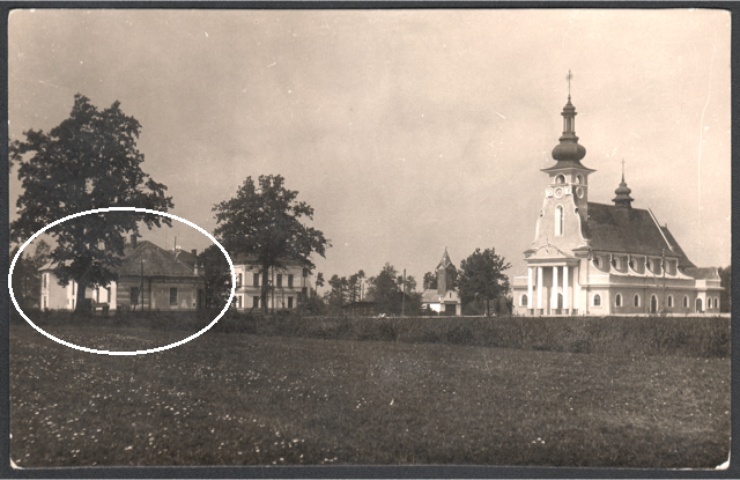 Survivor Edith Mincberg was born in this house (circled) where her parents and grandparents lived and operated a country store. Photo from the collection of Michał Kajstura, whose ancestors attended the church seen in the photo.
Survivor Edith Mincberg was born in this house (circled) where her parents and grandparents lived and operated a country store. Photo from the collection of Michał Kajstura, whose ancestors attended the church seen in the photo. -
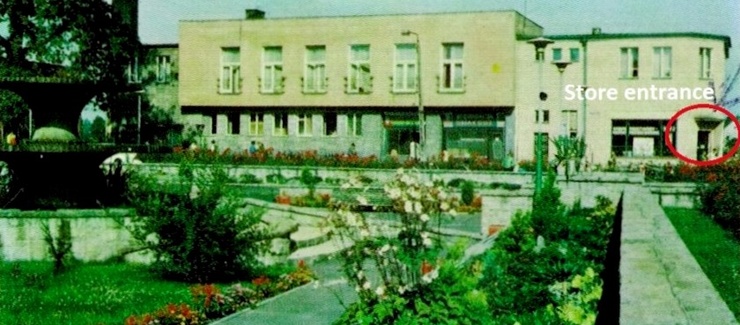 This image shows the building where the grandparents of Survivor Edith Mincberg once owned a store. Photo courtesy of Edith Mincberg
This image shows the building where the grandparents of Survivor Edith Mincberg once owned a store. Photo courtesy of Edith Mincberg -
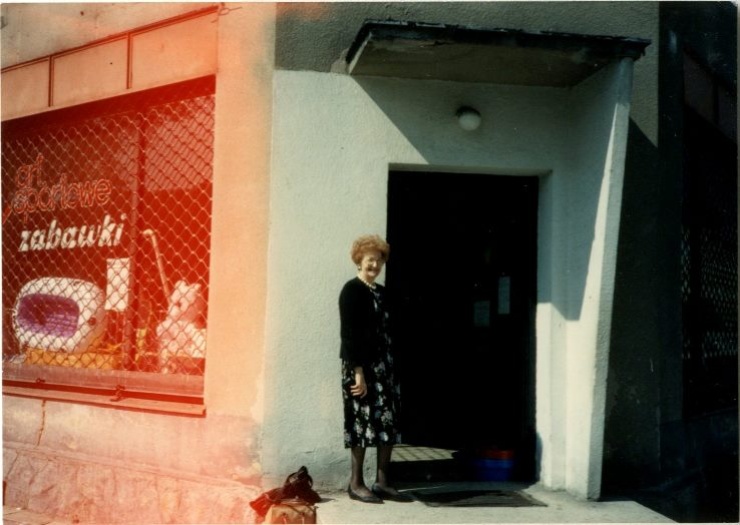 In 1991 Mincberg returned to visit the location of her grandparents' store. Photo courtesy of Edith Mincberg
In 1991 Mincberg returned to visit the location of her grandparents' store. Photo courtesy of Edith Mincberg -
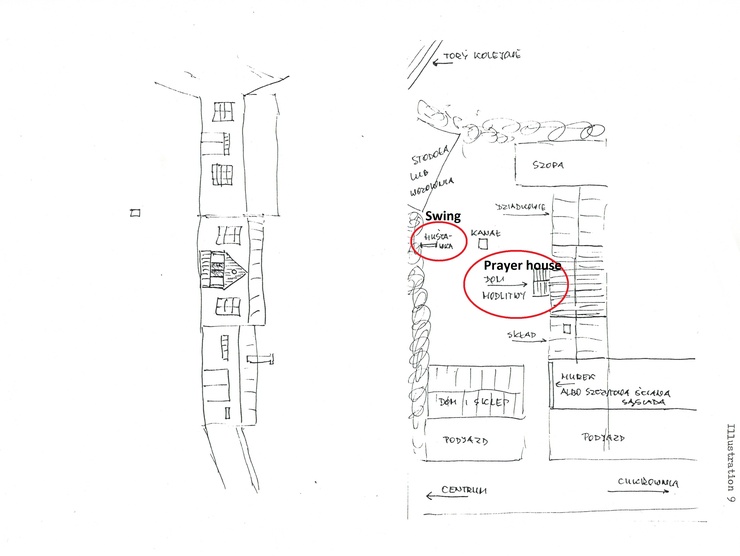 Survivor Edith Mincberg remembered playing on the swing across from the street from the prayer house in the small village of Chybie. Map from Dr. J. Spyra, "The history of the Jewish population in Chybie and surroundings," 2001. Courtesy of Edith Mincberg.
Survivor Edith Mincberg remembered playing on the swing across from the street from the prayer house in the small village of Chybie. Map from Dr. J. Spyra, "The history of the Jewish population in Chybie and surroundings," 2001. Courtesy of Edith Mincberg. -
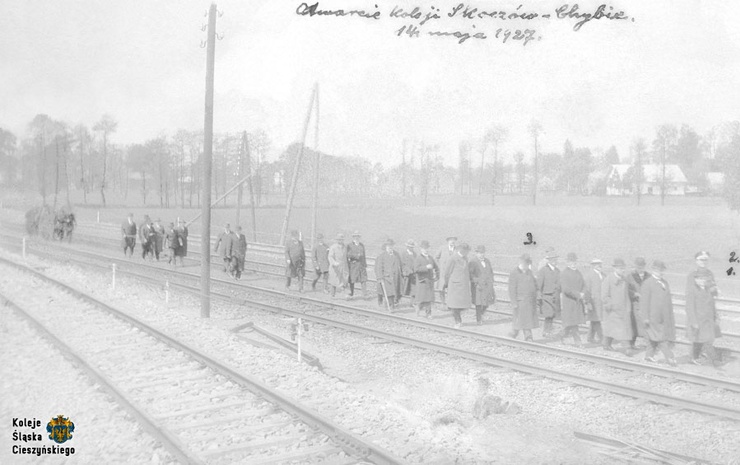 A rail line between Chybie and neighboring Skoczów opened in 1927.
A rail line between Chybie and neighboring Skoczów opened in 1927. -
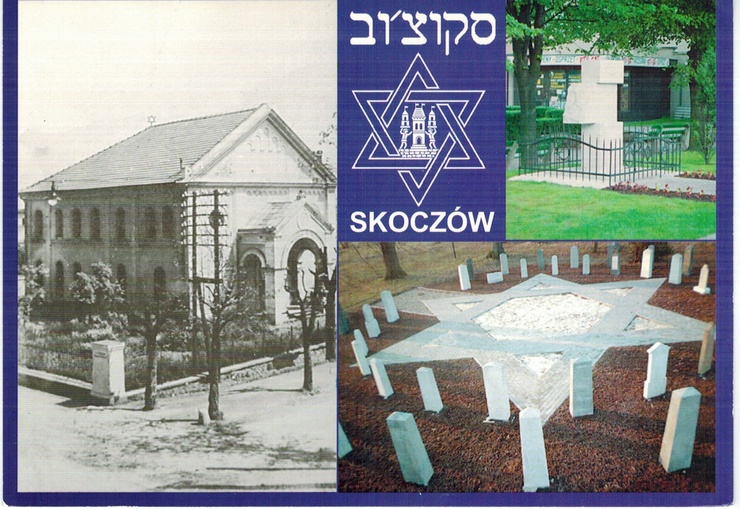 The Jews of Chybie sometimes worshipped in the synagogue built in the neighboring town of Skoczów, about 7 miles away. Photo courtesy of Edith Mincberg
The Jews of Chybie sometimes worshipped in the synagogue built in the neighboring town of Skoczów, about 7 miles away. Photo courtesy of Edith Mincberg -
 Chybie is found among the names of other cities and towns of Cieszyn (Teschen) Silesia at the Yad Vashem memorial in Israel. Photo courtesy of Edith Mincberg
Chybie is found among the names of other cities and towns of Cieszyn (Teschen) Silesia at the Yad Vashem memorial in Israel. Photo courtesy of Edith Mincberg
Destroyed Communities Memorial Slope
Chybie: Survivors
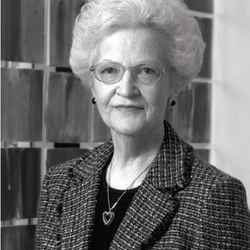
When Joe and I were married our only wish was to leave the slaughterhouse that Europe had become and have our children born as far away as possible. Thank G-d we accomplished that.
